You’re walking through a sun-dappled meadow when a faint oniony aroma catches your attention. Kneeling, you spot clusters of thin green leaves and delicate white flowers—wild onions!
Wild onions are a delicious, versatile gift from nature, but foraging them safely requires knowledge.
These humble plants have flavored meals for foragers for thousands of years, but one wrong move could mean mistaking them for a deadly poison.
Table of Contents
What Exactly Are Wild Onions? (And Why You’ll Love Them)
Wild onions aren’t just “weeds with attitude.” They’re part of the Allium family, cousins to your grocery-store onions and garlic. Wild onions are edible plants found in meadows, forests, and even backyards. They include species like wild chives, leeks, and ramson (wild garlic).

Known for their distinct onion aroma, these plants have been used for centuries in cooking and traditional medicine.
Here’s what makes them special:
- Free Flavor Bombs: Their sharp, peppery taste elevates everything from scrambled eggs to fancy charcuterie boards.
- Edibility: Every part—leaves, bulbs, flowers—is edible and packed with vitamin A, vitamin C (great for immunity), quercetin (a natural antihistamine), and antioxidants.
- Survival Superstars: Early settlers relied on them to prevent scurvy during harsh winters.
- Species Variety: Common types include Allium canadense (meadow garlic), Allium tricoccum (ramps), and Allium vineale (wild garlic).
Fun Fact: The city of Chicago got its name from the Miami-Illinois word “shikaakwa,” meaning “wild onion place”!
Spotting Wild Onions: 6 Step-by-Step Visual Guide
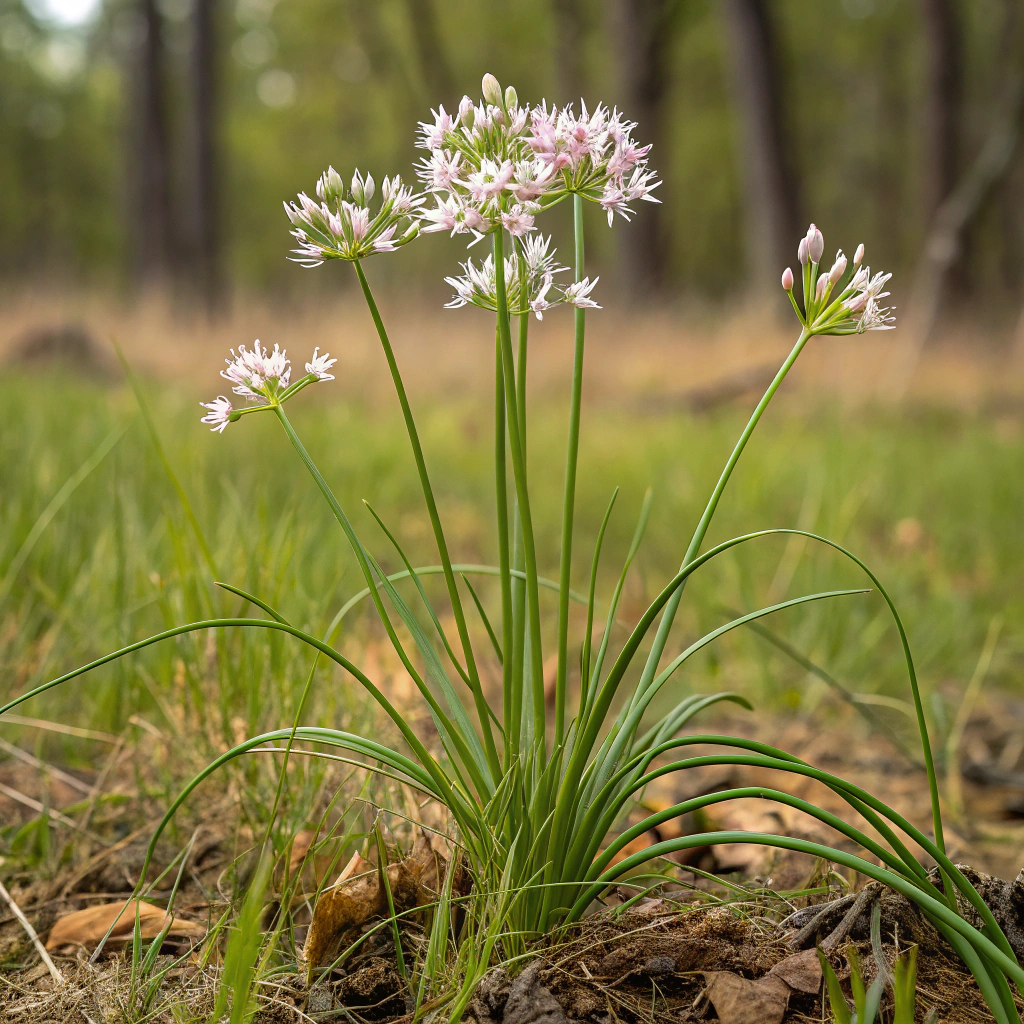
The 6-Second Identification Hack
- Smell: The AROMA is the easiest way to identify the wild onion! Crush a leaf between your fingers—if it doesn’t make your eyes water like chopped onions, walk away! True wild onions release a strong onion or garlic scent. If it smells like grass or has no scent, do not eat it.
- Leaves: Pluck one—true wild onion leaves are bright to dark green hollow, grass-like, and tubular like a tiny green straw.
- Stems: Rub between fingers—should feel smooth, not hairy or sticky.
- Bulbs: Dig gently—look for (1-2 cm wide) rounded or oval marble-sized bulbs wrapped in papery skin, like mini onions.
- Flowers: They bloom in spring/summer in umbrella-like clusters (not single flowers). Their colors range from white to pale pink/purple.
- Roots: Thin, fibrous roots extending from the bulb. Often surrounded by a mesh-like sheath.
Remember: If it doesn’t smell like onion, it’s not a wild onion, it’s a natural look-alike plant!
Wild Onion vs. Wild Garlic (Ramps)
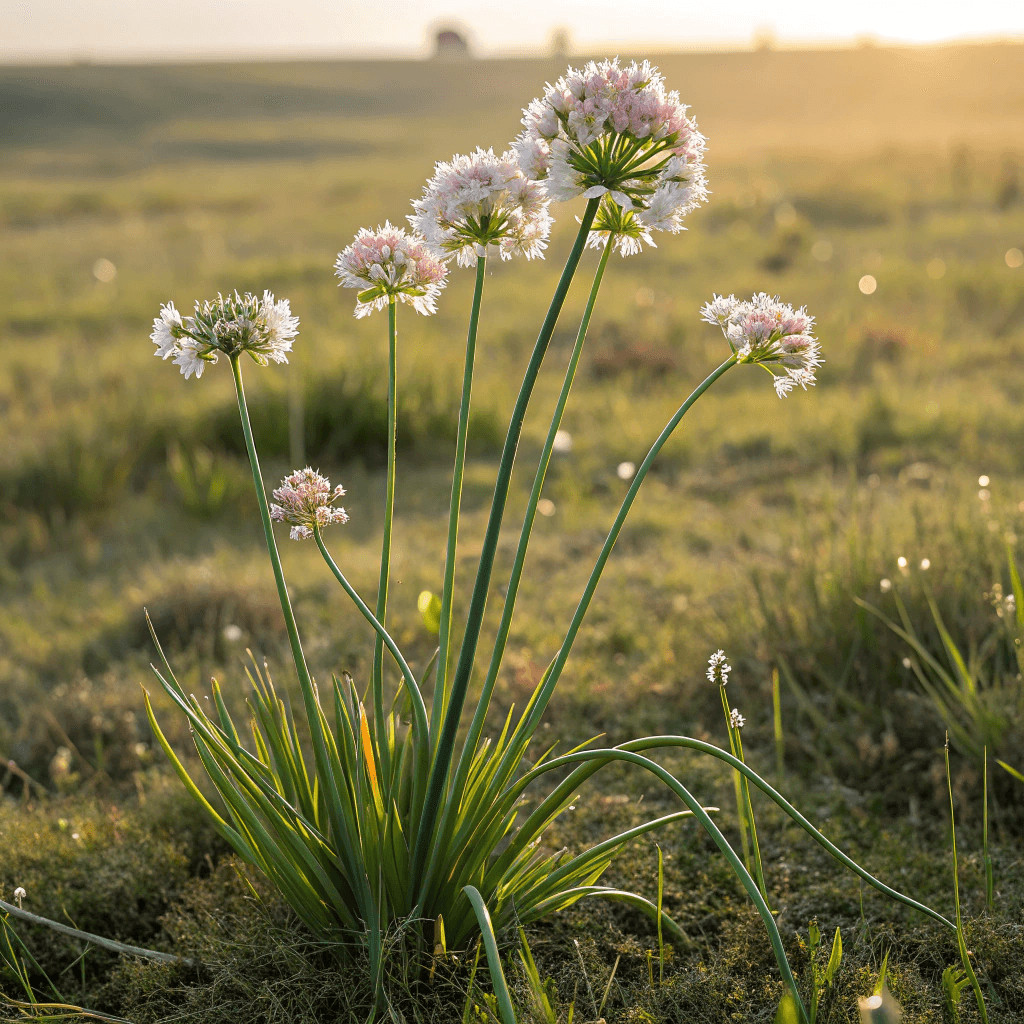
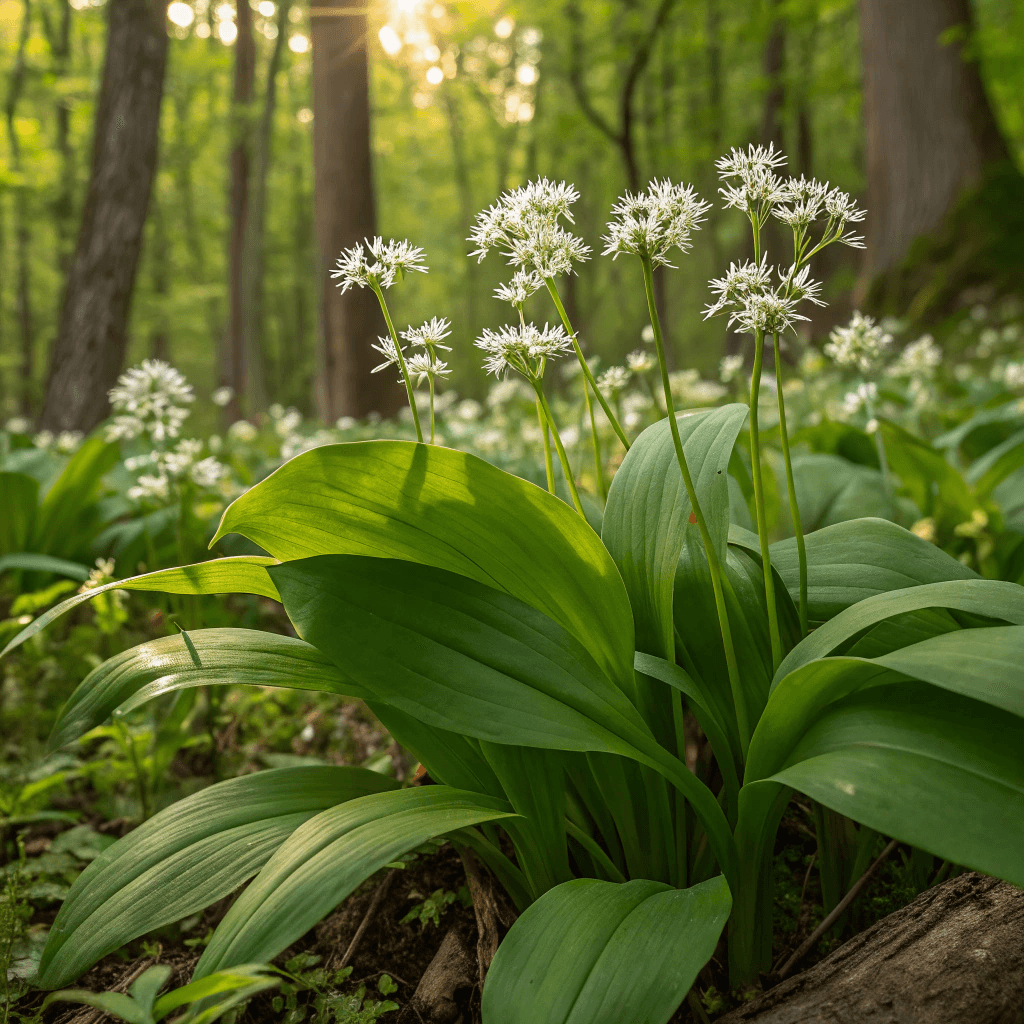
| Plant | Leaves | Flowers | Habitat | Smell |
|---|---|---|---|---|
| Wild Onion | Hollow, tubular | White/pink clusters | Sunny fields, lawns | Strong onion/garlic |
| Wild Garlic (Ramps) | Broad, flat | White, star-shaped | Moist and shaded woodlands | Strong garlic |
Note: Ramps (Allium tricoccum) are a type of wild onion but are protected in some regions due to overharvesting. Always check local regulations.
Wild Onion vs. Deadly Camas
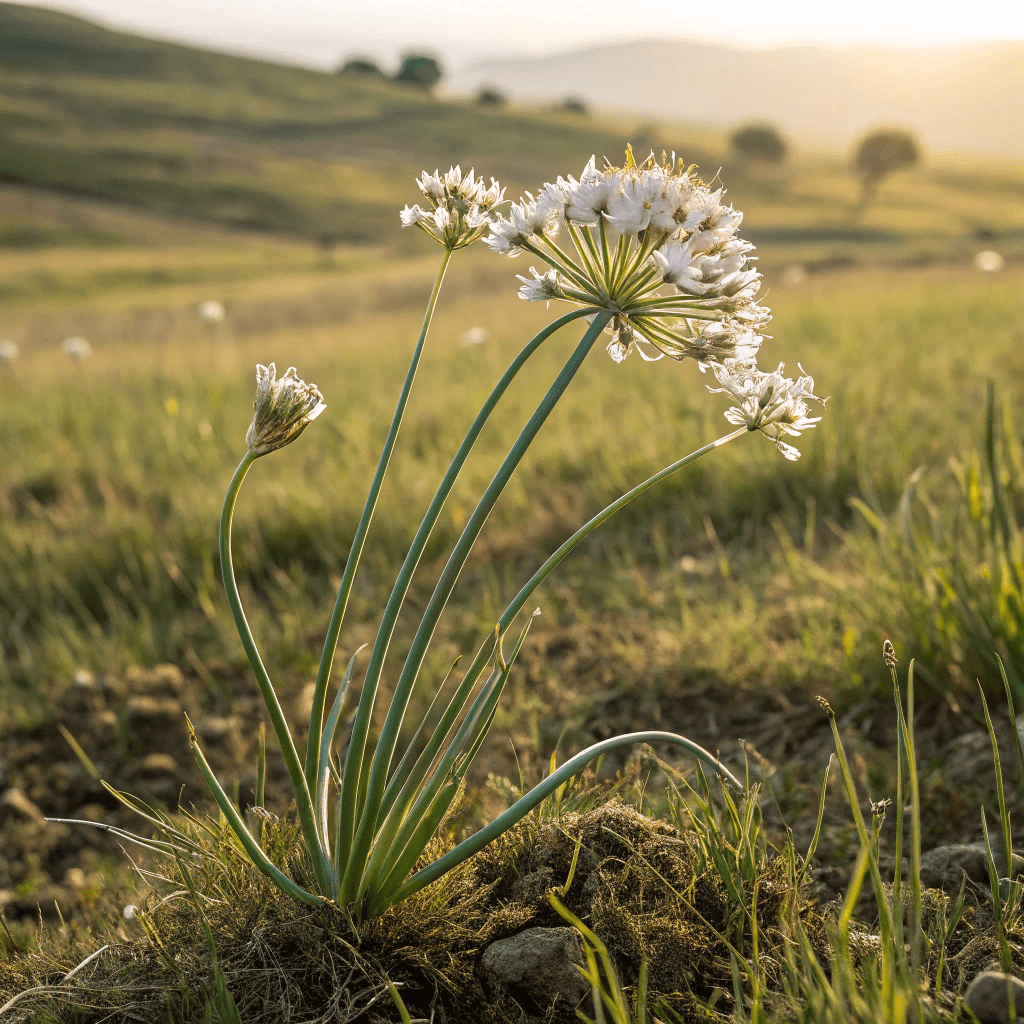
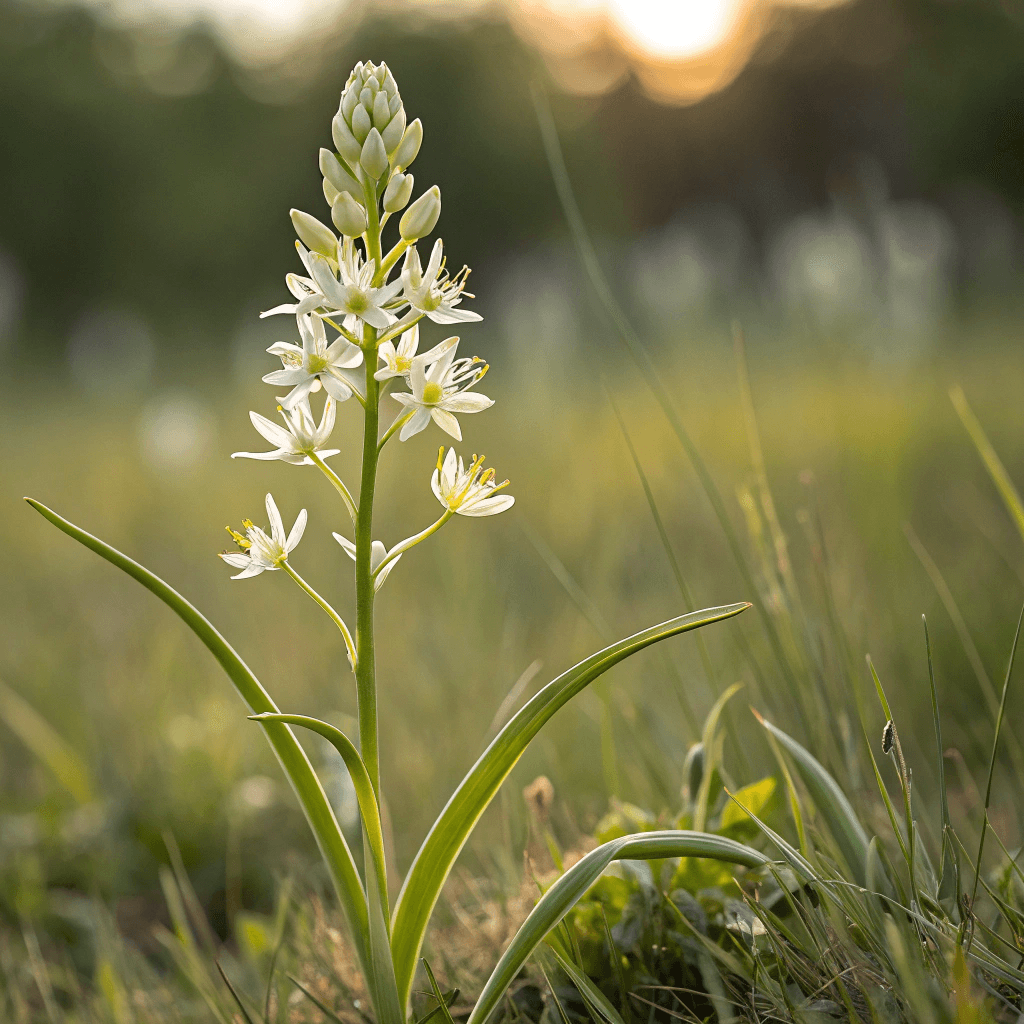
Death camas (Toxicoscordion venenosum) is a toxic plant that resembles wild onions. Here’s how to stay safe:
| Plant | Leaves | Flowers | Bulbs | Habitat | Smell |
|---|---|---|---|---|---|
| Wild Onion | Hollow, tubular | White/pink clusters | White, papery outer layer | Sunny fields, lawns | Strong onion/ garlic |
| Death Camas | Solid, V-shaped | Cream or yellow spike | Dark brown, no papery skin | Meadows, sagebrush flats | Earthy/ grassy |
PRO TIP: Carry a small mirror when foraging. Hold it under the flower cluster—the death camas have 6 identical star-shaped petals arranged symmetrically and grow on a vertical single, leafless stem (scape).
Death Camas: The Silent Killer

- Leaves: Waxy and V-shaped like a celery stalk with non-hollow
- Bulbs: Dark brown, no papery coating, smell earthy.
- Roots: Bulbs look like unpeeled almonds—dark brown with zero onion scent.
- Flowers: Creamy white to pale yellow (never pink or purple) spikes that look nothing like onion’s pretty clusters.
- Smell: Death camas lack the onion/garlic scent.
- Toxicity: Eating even a small amount can cause vomiting, seizures, heart failure, or death within hours of ingestion. Never rely on visual ID alone—always perform the smell test.
Real-Life Horror Story: In 2020, a Montana family was hospitalized after adding death camas to their salad. They survived, but only because they spat it out quickly—never skip the smell test!
PRO TIP: If you’re unsure, take a photo and use a plant ID app before touching the plant. When foraging, stick to 100% confirmed wild onions!
Other Toxic Twins
- Star of Bethlehem (Ornithogalum umbellatum):
- White flowers with green stripes on petals.
- Milky sap when broken (wild onions do not have sap).

- False Hellebore (Veratrum):
- Leaves resemble giant lettuce.
- Grows in wet meadows.

- Lily of the Valley (Convallaria majalis):
- Sweet-smelling flowers.
- Paired, oval leaves.
My Safety Rule: When in doubt, throw it out.
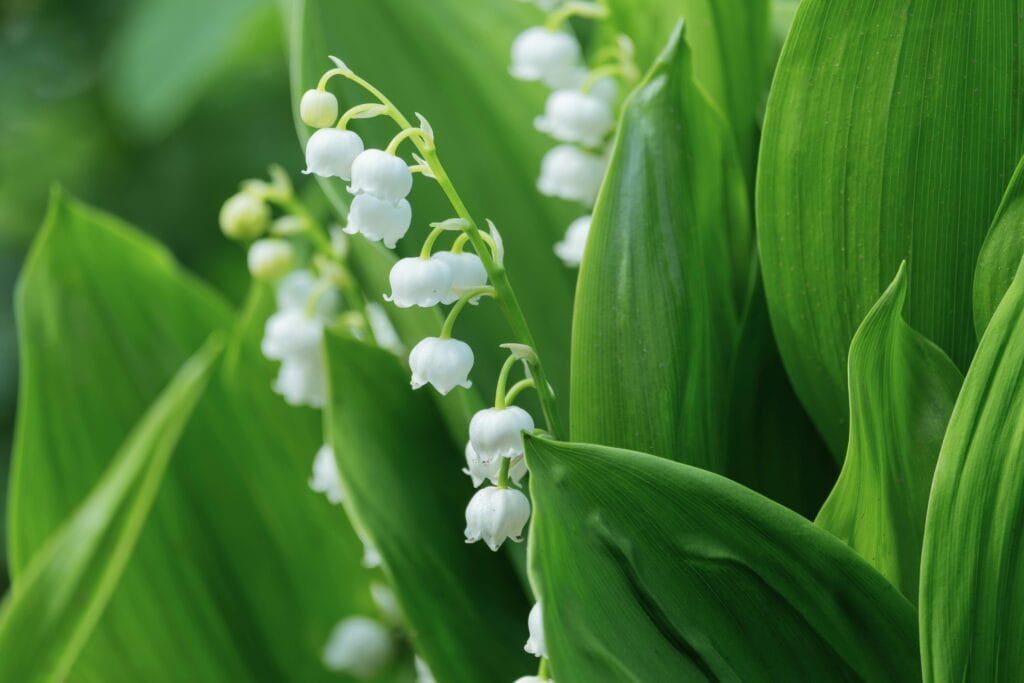
When and How to Harvest Wild Onions

When to Go Wild (Onion Hunting)
- Spring (Leaf Season): March-May; collect young leaves and flowers
- Late summer/fall (Bulb Bonanza): August–September; when bulbs are plump—ideal for pickling and roasting. Dig bulbs after the plant stores energy
- Fall (Seed Saving): Collect black seeds from dried flower heads to grow your own
Step-by-Step Harvesting
- Locate a Patch: Look for clusters in sunny, well-drained areas.
- Use a Trowel: Gently loosen the soil around the bulb to avoid damage.
- Trim Roots: Cut off roots if you’re harvesting bulbs for storage.
- Sustainable Harvesting: Practice the “1 in 3 Rule”—only take one plant from every 3 you find to ensure sustainability.
PRO TIP: Harvest after rain when the soil is soft to make digging easier.
Gear You’ll Actually Use
- A $5 Coin Trick: Use a quarter to measure bulbs. Smaller than ½ inch? Leave them to grow.
- The Lazy Forager’s Tool: Repurpose an old fork to gently lift bulbs without breaking them.
How to Know Which Onions Are Ready

Harvesting wild onions at the right time ensures the best flavor and protects the plant’s survival.
- Check the Leaves
- Ready: Leaves are 6–12 inches tall, vibrant green, and firm (not wilted or yellowing).
- Too early? If leaves are floppy or shorter than your hand, wait 1–2 weeks.
- Bulb Size Matters
- Ready: Bulbs are about the size of a marble (½–1 inch wide) when gently uncovered.
- Too small? Pea-sized bulbs lack flavor—cover them back up to grow.
- Flower Clues
- Ready to pick leaves: Harvest leaves before flowers fully open (they’re most tender).
- Ready to collect bulbs: Wait until flowers start to fade (bulbs are plump with stored energy).
- The “Tug Test”
- Gently tug a leaf. If it resists, the bulb is still anchored and growing.
- If it pulls up easily, the plant is mature—harvest bulbs or trim leaves carefully.
Pro Tip from My Mess-Up: I once harvested bulbs too early and got bland, watery results. Now I wait until at least one flower in the cluster starts wilting—it’s nature’s “ready” signal!
What Not to Harvest: 3 Red Flags
- Mushy bulbs: Slimy texture = rot. Leave them to nourish the soil.
- Flowerless plants: If no buds exist by late spring, the plant might be stressed—let it recover.
- Tiny patches: If fewer than 10 plants grow together, skip harvesting to preserve the colony.
Can You Eat Wild Onion Grass?
Yes! All parts of wild onion grass (leaves, bulbs, flowers) are edible. Use them like chives or green onions:
- Leaves: Chop into salads, soups, or omelette.
- Bulbs: Pickle or sauté as a seasoning.
- Flowers: Use as garnish or in infused oils.
Cooking Wild Onions: 3 Can’t-Mess-Up Recipes
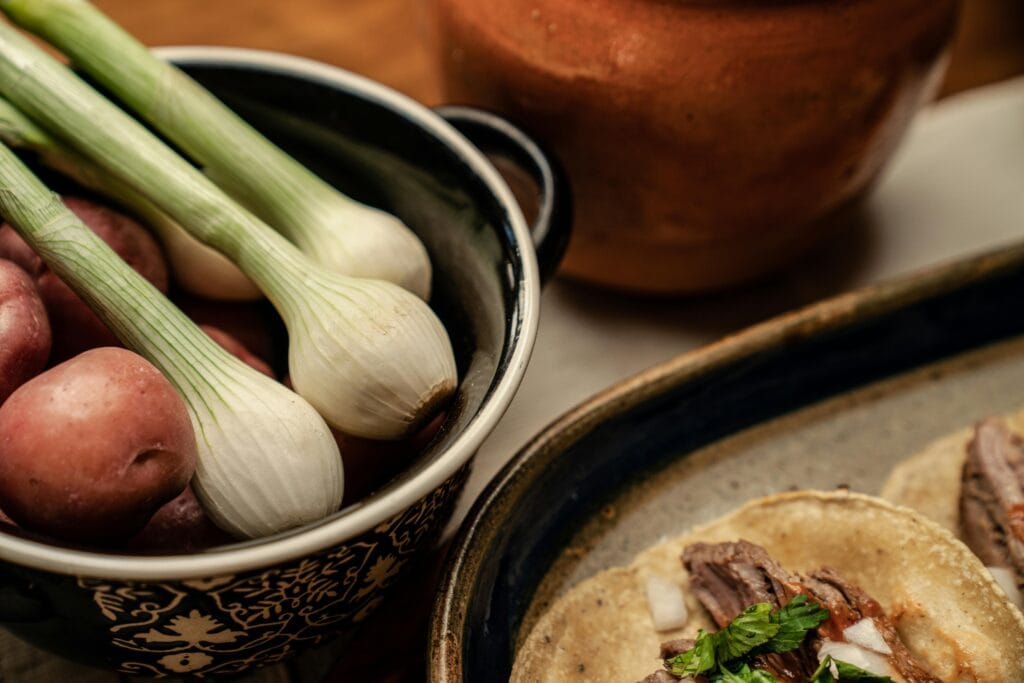
Wild onion grass (often Allium canadense) is safe to eat if it passes the smell test. Here’s how to use it:
1. Wild Onion Soup
- Sauté chopped bulbs with potatoes, add broth, blend, and top with fresh leaves.
2. Wild Onion Pesto
- Blend leaves with garlic, nuts, Parmesan, and olive oil for a bold pasta sauce.
3. Ramp Butter (Freezer Hack)
- Blend 1 cup softened butter with ½ cup chopped wild onion leaves.
- Roll into logs using parchment paper.
- Freeze—instant flavor for steaks or cornbread!
Recommended: Avoid wild onions growing near roadsides, industrial areas, or sprayed lawns—they may contain toxins.
Storing Wild Onions: Keep Them Fresh for Months
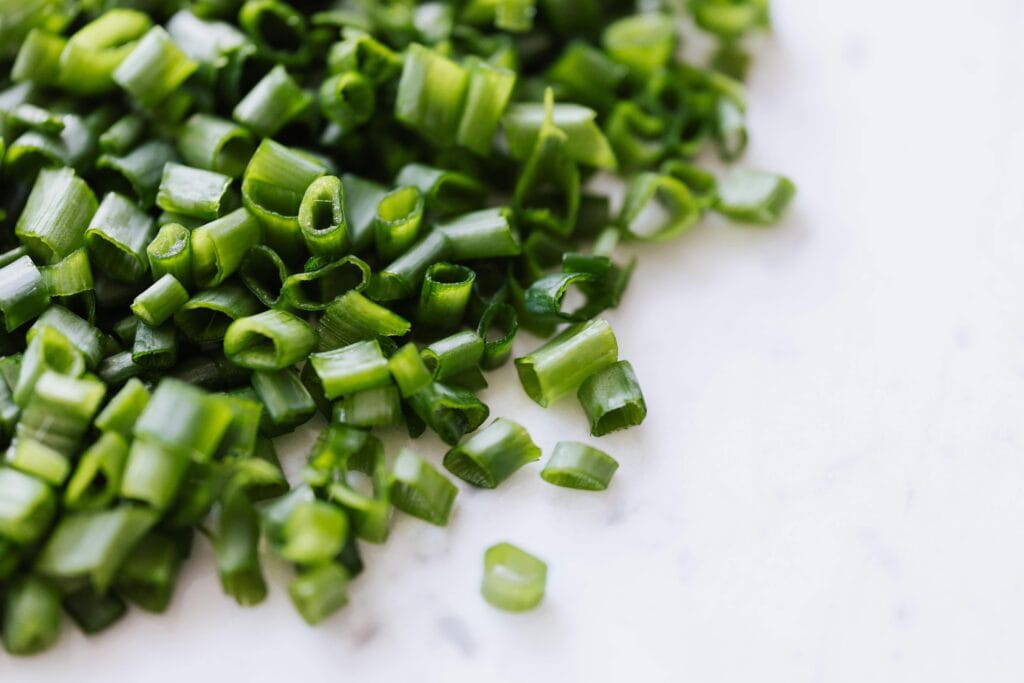
- Refrigerator Pickles:
- Place clean bulbs into jars with 1:1 vinegar/water (or just water), and 1 tbsp salt. Add dill or chili flakes. Ready in 3 days!
- Wrap leaves in a damp paper towel; store bulbs in a breathable bag (up to 2 weeks).
- DIY Onion Powder:
- Dry leaves in a paper bag for 2 weeks.
- Crush with a rolling pin.
- Store in an old spice jar—great for popcorn seasoning.
- Freezing:
- Chop leaves and freeze in ice cube trays with water.
- Drying:
- Hang bundles upside-down in a dark, dry place for 1–2 weeks.
Warning: Don’t dry bulbs in the oven—low heat makes them bitter. Air-dry only!
Urban Foraging: Yes, You Can Find Them in Cities!
- Park Edges: Check where lawns meet wooded areas.
- Avoid Roadsides: Plants may absorb pollutants from traffic.
- Your Own Yard: If you smell onions when cutting, congrats—free salad bar!
Little trick: Use Google Earth to spot green spaces between buildings.
Ethical Foraging: Protect the Ecosystem
- Ask Permission: Don’t forage on private property without consent.
- Avoid Rare Species: Ramps are endangered in parts of the U.S. and Canada.
- Leave No Trace: Fill holes after digging bulbs.
- No Overharvesting: Take only what you need and leave smaller plants to grow.
- Spread Seeds: Shake flower heads over the soil to encourage new growth.
With these tips, you’ll never waste time on unripe onions or harm the plants. Happy (and smart) harvesting! And remember: When in doubt, sniff it out—and always leave more than you take.

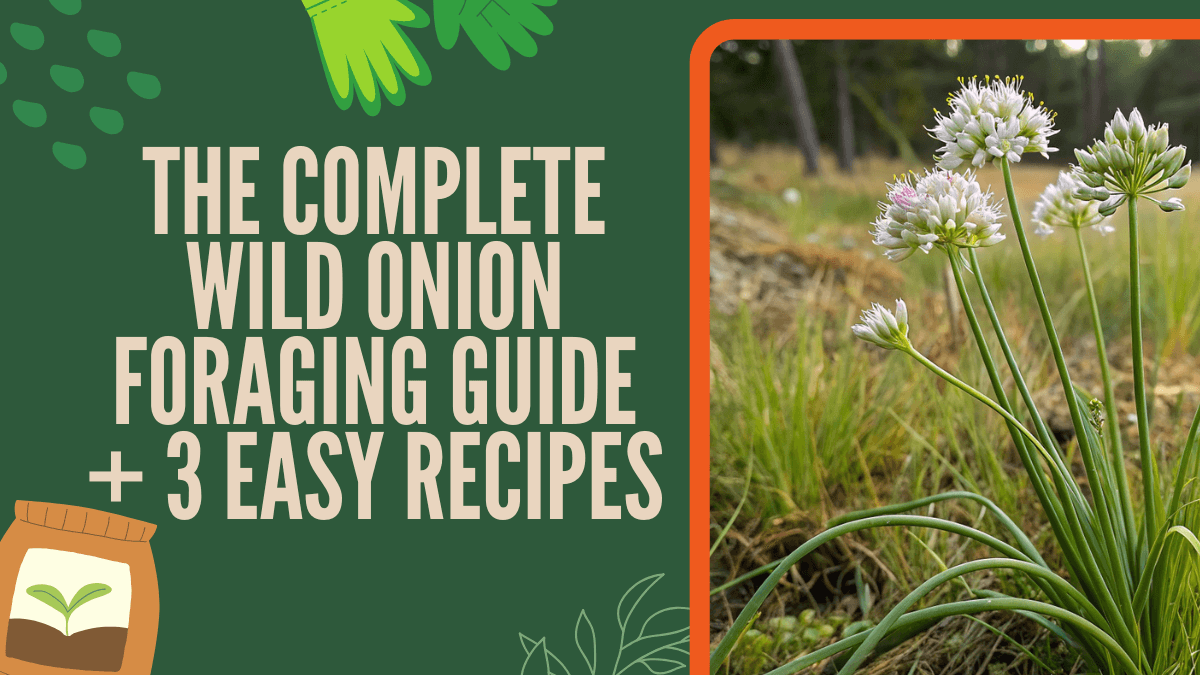
 ChatGPT
ChatGPT
 Perplexity
Perplexity
 Claude
Claude
Leave a Reply